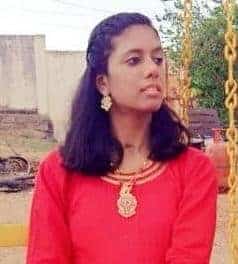
Today, there are various social media networking sites where you place a status regarding any current affair or comment on it, and you get immediate reply from the politician’s social media handlers. Among Facebook, WhatsApp groups, Linkedin, Instagram and other social media sites, Twitter is the most popular during the times of any election in India.
For one, there can be no connection between a social media site and elections of the country but there is oddity involved in case of Twitter. Here, let us see how the increase and decrease in the number of followers of the verified [right sign] accounts of VVIPs affect the poll predictions and the opinion polls. Sometimes, the Twitter wars are such that we can read the pulse of what people think of a certain politician.
Interestingly, the hashtags–‘Rahul Pappu’ and Modi ‘Namo’ also got popular with Twitter. Traditionally, pre-election polls have been used to ascertain trends and likely election outcomes. Predicting an election outcome based on user activity on Twitter has been shown to be a cheap alternative, a research study suggests.
By trying to monitor in real time the dissemination of public support for a candidate within Twitter, researchers were able to predict in advance the outcome of the 2013 Pakistani polls and 2014 Indian elections respectively. In general, the bulk of the work in this area follows the same approach, combining Twitter sentiment analysis, the volume of tweets or mentions of a candidate and correlating these with electoral results.
Looking at developing nations, Twitter users’ sentiment was used to forecast election outcomes in India, Pakistan, Indonesia and other countries. A case study claimed that Twitter forecasts outperformed all the traditional polls at the national level.
“Any jump in the followers of a candidate on the Twitter on the polling day or counting day prompts the politicians to start talking about their party’s winning prospects, but is it really so?,” asks a Twitterati Rohan.
Narendra Modi’s followers on Twitter currently are 6,37,74,912 , while his apparent opponent Rahul Gandhi’s Twitter followers currently are 1.67 crore and any fluctuations in the forthcoming years 2021 to 2024 would not be a new thing as this is the trend followed in the previous years too. Like, for example, in 2014 elections, people in India and across the world came together in moments of celebration, protest, mourning and joy. Many millions contributed to these moments and conversations that all unfolded on Twitter.
#Year on Twitter in India — The Golden Tweet for India in 2014 comes from the #LokSabha election with Prime Minister Narendra Modi’s (@NarendraModi election-winning Tweet becoming the most re-tweeted Tweet ever in India: India has won! भारत की विजय। अच्छे दिन आने वाले हैं। whereas Rahul Gandhi grinned and smiled and played it cool in his post-election press conference, the people were quick to react to Rahul Gandhi’s defeat in the first general elections under his leadership. They said – “Pappu – the mamma’s boy will now return to Italy.”
Along with public policy, Twitter sentiment analysis has also been used in political contexts ranging from analyzing public resentment towards elected functionaries to predicting election results. Subsequently, in 2019 general elections, the use of Hindi language for Tweets and very extensive use of Twitter by BJP’s politicians aided them to win a majority in the Lok Sabha elections.
Moreover, by undertaking performance analysis, the Modi government was filtering the issues to raise them in the election campaign, and with the help of social media like Facebook and Twitter, they got to know the mood of the public and accordingly used these issues in their election plank. The perception battles for 2014 Lok Sabha elections were fought on Twitter, with Narendra Modi and BJP official handle engaging in aggressive marketing. Agendas were revealed, debates were held and opinions formed, all on Twitter. The BJP’s social media game was on the dot.
According to a Times of India report, Rahul Gandhi’s Twitter engagement had increased significantly since he took over as the Congress president in December 2017. In January 2019, personal attacks, witty remarks and discourse on farmers and jobs made Rahul Gandhi a winner on Twitter. He was ahead of NAMO. But after Pulwama attack, Modi’s Twitter army turned the tables on the Congress.
Also, apart from acting as the election poll meter, the social media also enable the people to get in touch with their area politicians and bring their grievances to their notice by posting pictures and tagging these politicians. This, in a way, shows the popularity of social media sites, especially Twitter, in making politicians responsible to their voters.
Fatima Hasan is a Hyderabad based journalist

